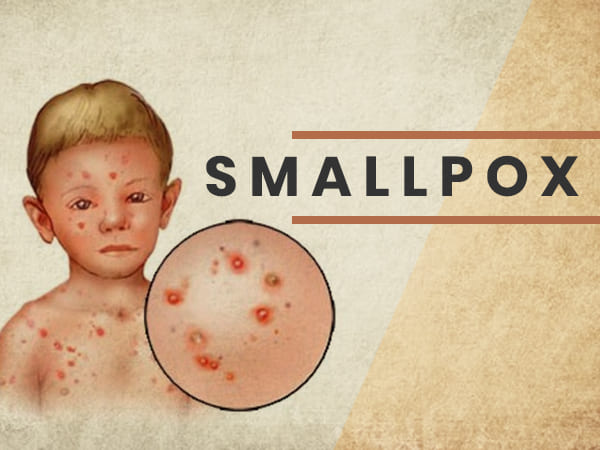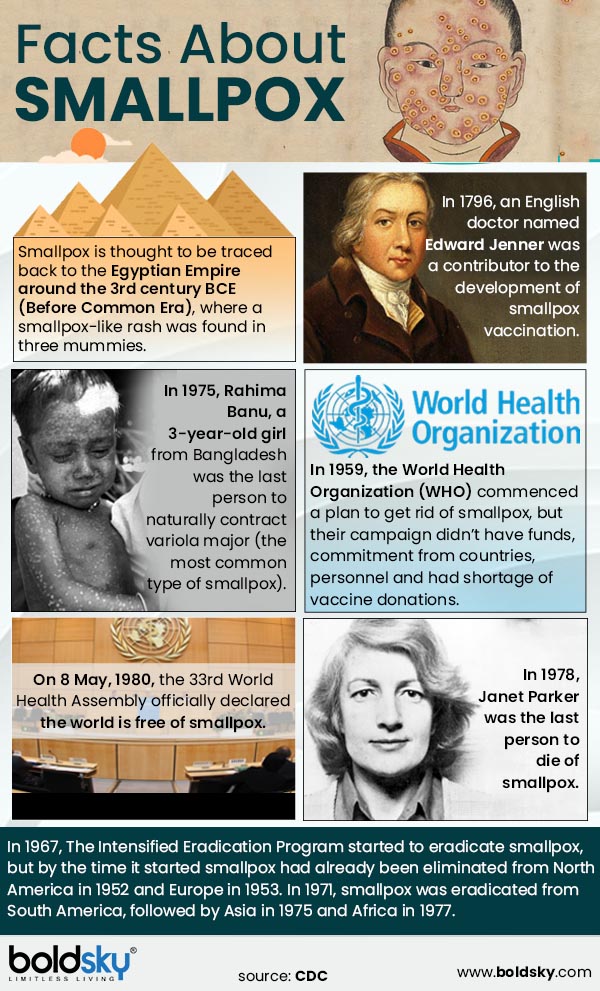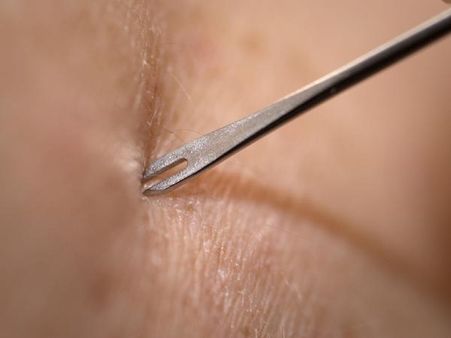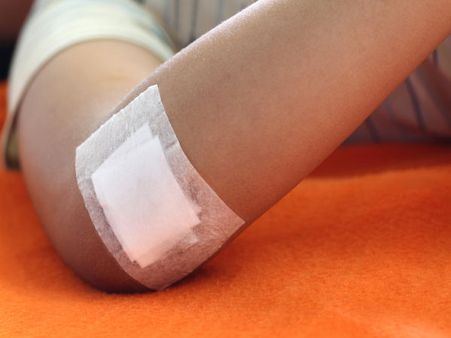Just In
- 2 hrs ago

- 3 hrs ago

- 6 hrs ago

- 6 hrs ago

Don't Miss
- Movies
 Vahbiz Dorabjee On Being Offered Mother Roles; Losing 10 Kgs & Stunning Transformation: I Was Impacting My…
Vahbiz Dorabjee On Being Offered Mother Roles; Losing 10 Kgs & Stunning Transformation: I Was Impacting My… - News
 Rs 4 Crore Cash Seizure Case: BJP Leader Nainar Nagendran To Appear Before TN Police On May 2
Rs 4 Crore Cash Seizure Case: BJP Leader Nainar Nagendran To Appear Before TN Police On May 2 - Finance
 Rs 7.50/Share Dividend: Adani Group Cement Company Reports Strong Q4 Results; Profit Surges 2x YoY
Rs 7.50/Share Dividend: Adani Group Cement Company Reports Strong Q4 Results; Profit Surges 2x YoY - Education
 Tamil Nadu SSLC Results 2024: Number of Ways you can check the Results
Tamil Nadu SSLC Results 2024: Number of Ways you can check the Results - Automobiles
 Bajaj To Offer Chetak Electric Scooter At Lower Price Point: All Details Here
Bajaj To Offer Chetak Electric Scooter At Lower Price Point: All Details Here - Sports
 Bangladesh vs Zimbabawe: Will Shakib Al Hasan Play Home T20 Series In May Or Not?
Bangladesh vs Zimbabawe: Will Shakib Al Hasan Play Home T20 Series In May Or Not? - Technology
 Qualcomm Reveals Snapdragon X Plus Chip for Laptops: 10 Core CPU, On-Device AI, & Much More
Qualcomm Reveals Snapdragon X Plus Chip for Laptops: 10 Core CPU, On-Device AI, & Much More - Travel
 Escape to Kalimpong, Gangtok, and Darjeeling with IRCTC's Tour Package; Check Itinerary
Escape to Kalimpong, Gangtok, and Darjeeling with IRCTC's Tour Package; Check Itinerary
Smallpox: History, Causes, Symptoms, Diagnosis And Treatment
Smallpox is a highly contagious disease caused by the variola virus (VARV), which belongs to the Orthopoxvirus genus. It was one of the most infectious diseases known to mankind. The last case of smallpox was seen in Somalia in 1977and in 1980, the World Health Organization (WHO) declared the eradication of smallpox [1].
History Of Smallpox [2]
Smallpox is thought to have originated in North-eastern Africa in 10,000 BC and from there it was most likely spread to India by the ancient Egyptian merchants. The early evidences of skin lesions resembling that of smallpox was seen on the faces of mummies in ancient Egypt.
In the fifth and seventh centuries, smallpox appeared in Europe and it became an epidemic during the middle ages. Annually, 400,000 people died of smallpox and one-third of the survivors went blind in the 18th century in Europe.
The disease later spread along trade routes to other countries.

What Is Smallpox?
Smallpox is characterised by the severe blisters that appear in a sequential manner and leave disfiguring scars on the body. These blisters fill up with clear fluid and later pus and then form into crusts which eventually dry up and fall off.
Smallpox was an acute infectious disease caused by the variola virus. Variola comes from the Latin word varius, meaning stained or from varus, meaning mark on the skin [3].
The variola virus has a double-stranded DNA genome, which means it has two strands of DNA twisted together with a length of 190 kbp [4]. Poxviruses replicate in the cytoplasm of the host cells rather than the nucleus of susceptible cells.
On an average, 3 out of 10 people who got smallpox died and those who survived were left with scars.
Most researchers assume that some 6000 - 10,000 years ago the domestication of animals, the development of land farming and the development of large human settlements have created conditions that led to the emergence of smallpox [5].
However, according to a study published in the journal Clinical Infectious Diseases, variola virus may have been transferred to humans through a cross-species transfer from a host that has become extinct [6].

Types Of Smallpox [7]
The smallpox disease is of two types:
• Variola major - It is a serious and the most common form of smallpox that has a death rate of 30 per cent. It causes high fever and large rashes. Ordinary (the most common form), modified (milder form and would occur in people who were previously vaccinated), flat and hemorrhagic are the four types of variola major. Flat and hemorrhagic are the uncommon types of smallpox which are usually deadly. The incubation period of hemorrhagic smallpox is much shorter and initially, it's difficult to diagnose it as smallpox.
• Variola minor - Variola minor is known as alastrim is a milder form of smallpox which had a fatality rate of one per cent or less. It causes fewer symptoms like less extensive rash and scarring.


How Is Smallpox Spread?
The disease is spread when a person infected with smallpox coughs or sneezes and the respiratory droplets are emitted from their mouth or nose and inhaled by another healthy person.
The virus is inhaled and then lands on and infects the cells that cover the mouth, throat and respiratory tract. Infected bodily fluids or contaminated objects such as bedding or clothing can also spread smallpox [8].

Symptoms Of Smallpox
After you are infected with the virus, the incubation period is between 7-19 days (averaging 10-14 days) During this period, the virus replicates in the body, but a person may not usually show many symptoms and may look and feel healthy. Dr Sneha says, "Even though the person is asymptomatic, they may have low grade fever or a mild rash which may not be very evident".

After the incubation period, the initial symptoms start appearing, which include the following:
•
High
fever
•
Vomiting
•
Headache
•
Body
aches
•
Severe
fatigue
•
Severe
back
pain
After these early symptoms, a rash appears as small red spots on the mouth and tongue which lasts for about four days.
These small red spots change into sores and spread into the mouth and throat and then to all the parts of the body within 24 hours. This stage lasts four days. Dr Sneha says, "The rash distribution is typical of smallpox: it appears first on the face, hands and forearms and then spreads to the trunk and extremities (sequential appearance). This is important in differentiating small pox from varicella infections".
On the fourth day, the sores fill with thick fluid until scabs form over the bumps lasting for 10 days. After which the scabs begin to fall off, leaving scars on the skin. This stage lasts for about six days.
Once all the scabs have fallen off, the person is no longer contagious.

What Is The Difference Between Smallpox And Chickenpox?
Dr Sneha says, "The small pox rash is first seen on the face and then moves towards the body and finally the lower limbs whereas in chicken pox the rash appears on the chest and abdomen area first and then spreads out to other parts (very rarely the palms and soles). The time lag between fever and rash developing can vary in some cases".

Diagnosis Of Smallpox
To determine whether the rashes are smallpox, the Centers for Disease Control and Prevention (CDC) recommends using an algorithm "Evaluating Patients for Smallpox: Acute, Generalized Vesicular or Pustular Rash Illness Protocol" which is a conventional method for assessing patients with rash illnesses by providing clinical clues for differentiating smallpox from other rash illnesses [9].
The doctor will then physically examine the patient and ask about their recent travel history, medical history, contact with ill or exotic animals, symptoms that started before the onset of rash, contact with any sick people, history of prior varicella or herpes zoster and history of varicella vaccination.
The diagnostic criteria for smallpox include the following:
• Having fever above 101°F and having at least one of the symptoms which are chills, vomiting, headache, backache, severe stomach pain and prostration.
• Lesions that appear on any one part of the body like the face and arms.
• Firm or hard and round lesions.
• First lesions that appear inside the mouth, face and arms.
• Lesions on the palms and soles of the feet.

Prevention And Treatment Of Smallpox
There is no cure for smallpox, but smallpox vaccination can protect a person from smallpox for about three to five years, after which its protection level decreases. A booster vaccination is required for long-term protection from smallpox, according to the CDC [10].
The smallpox vaccine is made from vaccinia virus, a poxvirus similar to smallpox. The vaccine contains live vaccinia virus, and not a killed or weakened virus.
The smallpox vaccine is given using a bifurcated needle that is dipped into the vaccine solution. When it is removed, the needle holds a drop of the vaccine and pricked into the skin 15 times in few seconds. The vaccine is usually given in the upper arm and if the vaccination is successful, a red and itchy sore forms in the vaccinated area in three to four days.
During the first week, the sore becomes a blister filled with pus and drains out. During the second week, these sores dry and begin to form scabs. During the third week, the scabs fall off and leave a scar on the skin.
The vaccine should be given before a person contracts the virus and within three to seven days of being exposed to the virus. The vaccine will not protect a person once the smallpox rash appears on the skin.
In 1944, a smallpox vaccine called dryvax was licensed and it was manufactured until the mid 1980s when the WHO declared the eradication of smallpox [11].
According to the U.S. Food and Drug Administration, currently, there is a smallpox vaccine called ACAM2000, which was licensed on 31 August 2007. This vaccine is known to make people who are at a high risk of smallpox disease immune. However, it causes adverse side effects such as heart problems like myocarditis and pericarditis [12].
On 2 May 2005, CBER licensed Vaccinia Immune Globulin, Intravenous (VIGIV), which is used for the treatment of rare serious complications of smallpox vaccines.
The smallpox vaccine has mild to severe side effects.Mild side effects include fever, muscle aches, fatigue, headache, nausea, rashes, soreness, satellite lesions and regional lymphadenopathy.
In the 1960s, serious side effects of smallpox vaccination was reported in the United States, and these included progressive vaccinia (1.5 million vaccinations), eczema vaccinatum (39 million vaccinations), postvaccinial encephalitis (12 million vaccinations), generalized vaccinia (241 million vaccinations) and even death (1 million vaccinations) [13].

Who Should Get Vaccinated?
• A lab worker working with the virus that causes smallpox or other viruses that are similar to it should get vaccinated (this is in the case of no smallpox outbreak).
• A person who has directly exposed to the smallpox virus through face to face contact with a person who has smallpox should get vaccinated (this is in the case of smallpox outbreak) [14].

Who Should Not Get Vaccinated?
According to the WHO, people who have or had skin conditions, especially eczema or atopic dermatitis, people with weakened immunity, HIV positive people and people who are receiving treatment for cancer shouldn't get the smallpox vaccine unless they are exposed to the disease. This is due to their increased risk of having side effects.
Pregnant women shouldn't get the vaccine as it may harm the foetus. Breastfeeding women and children younger than 12 months of age shouldn't get the smallpox vaccine [15].

What To Do After You Are Vaccinated?
•
The
vaccination
area
should
be
covered
with
a
piece
of
gauze
with
a
first-aid
tape.
Ensure
that
there
is
proper
airflow
and
no
fluids
get
into
it.
•
Wear
a
full-sleeve
shirt
so
that
it
covers
the
bandage.
•
Keep
the
area
dry
and
do
not
allow
it
to
get
wet.
If
it
gets
wet,
change
it
immediately.
•
Cover
the
area
with
a
waterproof
bandage
while
bathing
and
do
not
share
towels.
•
Change
the
bandage
every
three
days.
•
Wash
your
hands
after
you
touch
the
vaccination
area.
•
Don't
touch
the
area
and
don't
allow
others
to
touch
it
or
things
such
as
towel,
bandages,
sheets
and
clothes
that
have
touched
the
vaccinated
area.
•
Wash
your
own
clothes
in
hot
water
with
detergent
or
bleach.
•
Used
bandages
should
be
dumped
in
plastic
zip
bags
and
then
thrown
it
into
the
dustbin.
•
In
a
plastic
zip
bag,
put
all
the
scabs
that
have
fallen
off
and
then
throw
it
away
[16].

How Was Smallpox Controlled Earlier?
Variolation, named after the virus that causes smallpox was one of the first methods for controlling the spread of smallpox disease. Variolation was a process to immunise an individual who never had smallpox by using a material from the smallpox sores of an infected patient. It was done either by scratching the material into the arm or inhaling it through the nose and people developed symptoms such as fever and rash.
It is estimated that between 1 per cent to 2 per cent of people who had undergone variolation died as compared to 30 per cent of people who died when they contracted smallpox. However, variolation had a lot of risks, the patient could die or someone else could contract the disease from the patient.
The fatality rate of variolation was ten times lower as compared to naturally occurring smallpox [17].
Common FAQs
Q. Does smallpox still exist?
A. Currently, there are no reports of the emergence of smallpox anywhere around the world. However, small quantities of the smallpox virus still exist in two research laboratories in Russia and the USA.
Q. Why was smallpox so deadly?
A. It was deadly because it was an airborne disease that tends to spread fast from one infected person to another.
Q. How many died of smallpox?
A. It is estimated that 300 million people died of smallpox in the 20th century.
Q. Will smallpox ever come back?
A. No, but the governments believe that the smallpox virus exists in places other than the laboratories which could be deliberately released to cause harm.
Q. Who is immune to smallpox?
A. People who are vaccinated are immune to smallpox.
Q. Who found the cure for smallpox?
A. In 1796, Edward Jenner made a scientific attempt to control smallpox by the deliberate use of vaccination.
Q. How long did smallpox pandemic last?
A. According to the WHO, smallpox has existed for at least 3,000 years.

-
 disorders cureMonkeypox: Causes, Symptoms, Complications, Diagnosis And Treatment
disorders cureMonkeypox: Causes, Symptoms, Complications, Diagnosis And Treatment -
 pregnancy parentingWhite Lung Syndrome: What Are The Symptoms Of The Disease Rampant In China? How Does It Spread?
pregnancy parentingWhite Lung Syndrome: What Are The Symptoms Of The Disease Rampant In China? How Does It Spread? -
 healthWorld HIV/AIDS Day: What Is The Difference Between HIV and AIDS?
healthWorld HIV/AIDS Day: What Is The Difference Between HIV and AIDS? -
 healthDengue 101: Causes, Symptoms, Risks, Complications, Treatment, Prevention, Diet And More
healthDengue 101: Causes, Symptoms, Risks, Complications, Treatment, Prevention, Diet And More -
 healthDiarrhoea 101: Causes, Symptoms, Risks, Complications, Treatment, Prevention, Diet And More
healthDiarrhoea 101: Causes, Symptoms, Risks, Complications, Treatment, Prevention, Diet And More -
 health'Epileptic Nightmare' of Neurocysticercosis: The Hidden Epidemic of Parasites Causing Epilepsy
health'Epileptic Nightmare' of Neurocysticercosis: The Hidden Epidemic of Parasites Causing Epilepsy -
 pregnancy parentingLife-Threatening Risk During Pregnancy: Sepsis Can Harm Both Mother and Baby
pregnancy parentingLife-Threatening Risk During Pregnancy: Sepsis Can Harm Both Mother and Baby -
 healthStay Informed: The Hidden Dangers of Legionnaires' Disease and How to Prevent It
healthStay Informed: The Hidden Dangers of Legionnaires' Disease and How to Prevent It -
 healthMyths vs Facts: Can A Single Mosquito Bite Really Give You Dengue?
healthMyths vs Facts: Can A Single Mosquito Bite Really Give You Dengue? -
 healthTop 5 Reasons For Vaginal Rash: When You Should See A Doctor
healthTop 5 Reasons For Vaginal Rash: When You Should See A Doctor -
 healthCan Inhaling Menthol Help Improve Memory For Alzheimer's Disease?
healthCan Inhaling Menthol Help Improve Memory For Alzheimer's Disease? -
 healthWorld Vitiligo Day 2023: Are You At Risk Of Developing Vitiligo?
healthWorld Vitiligo Day 2023: Are You At Risk Of Developing Vitiligo?


 Click it and Unblock the Notifications
Click it and Unblock the Notifications





